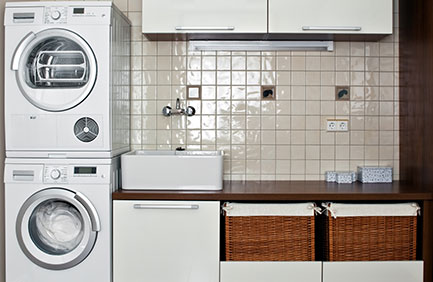The average American family washes eight to 10 loads of laundry each week, states the Association of Home Appliance Manufacturers. Most people would agree that laundry seems to be a never-ending chore. However, with an organized and well-designed laundry room, it’s almost effortless to launder even the largest loads. You may spend less time cleaning up life’s little messes with these helpful tips:

• Make separating light, dark and hand-wash clothing a simple task by sorting the items into specific hampers. Even the kids can help divide and conquer dirty clothing.
• Place a small bowl by the washing machine to collect buttons, receipts, pens, change and other forgotten items.
• Create extra storage space near the washer and dryer with a shelving system that can store freshly folded towels and stacks of clothes until they’re put in their proper place. Place shelves at arm level to also store detergent, stain removers and other laundry aids, while cabinet doors can neatly hide the iron, lint brush and sewing kit.
• Designate a well-lit space for folding, mending and repairing clothes. It will help shed light on those stains and almost-invisible holes.
• Position a portable or wall-mounted ironing board so it’s easily accessible for quick ironing touch-ups.
• Corral the family’s socks and other delicates in a collection of fabric drawers. Assign a different colored bin to each family member for easy distinction.










